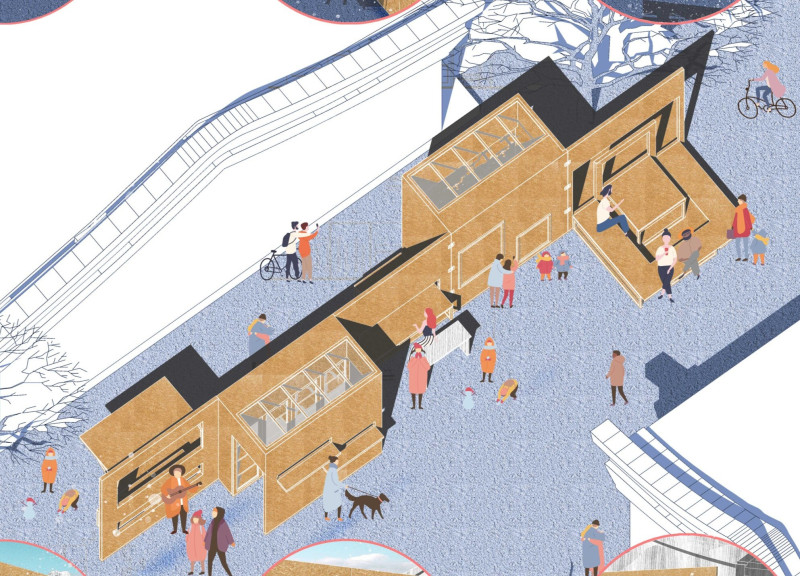5 key facts about this project
The architectural design situates itself within the historic backdrop of Beijing’s hutongs, focusing on creating a space that encourages community interaction and accommodates a variety of reading preferences. It addresses current urban challenges, such as limited leisure time and a lack of accessible cultural resources. The overall concept revolves around crafting a flexible environment that allows for both individual and shared experiences in reading and social engagement.
Flexible Spatial Organization
The design emphasizes multifunctionality and adaptability. Spaces are organized to serve multiple purposes, allowing areas to shift in use based on the needs of the residents. For instance, furniture arrangements can easily change, enabling the transformation of private reading corners into lively communal spaces. This adaptability is crucial in dense urban areas where the efficient use of limited space is essential.
Integration of Reading Modalities
Understanding the diverse preferences for reading, the design thoughtfully includes areas tailored for different formats. With a significant number of users preferring printed books alongside those who favor digital platforms, separate spaces are created to enhance each experience. This careful consideration invites a range of interactions with literature, promoting enjoyment and discourse among community members.
Sustainable Practices and Materials
Sustainability plays a key role in the design, reflected in the careful selection of materials and energy solutions. The use of clean, dry wheat straw demonstrates an environmentally friendly choice, aligning with the region's historical context. Transparent solar panels are integrated to provide necessary energy while allowing natural light to fill the interior spaces. This focus on sustainability supports both the ecological ambitions of the design and the well-being of its users.
Community Engagement and Aesthetic Quality
Open and shared spaces form the heart of the design, encouraging interactions among residents. Natural light floods these communal areas, improving the atmosphere and enhancing user experience. The design acknowledges the importance of light in shaping behavior and engagement, creating environments that invite participation in activities and conversations.
The thoughtful arrangement of spaces and the interplay of light create welcoming areas that inspire both solitude and community. This balance reflects an understanding of urban living, inviting connections among individuals within the rich tapestry of Beijing.



























